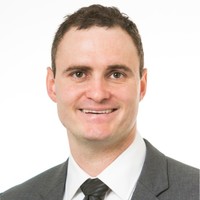Changes in Pediatric Injuries Sustained While Engaged in Activities Where Helmet Usage Is Recommended During the COVID-19 Pandemic
Brent M. Troy, MD, MPH, FAAP
Kiesha Fraser Doh, MD
Allison Linden, MD, MPH
Yijin Xiang, MPH
Maneesha Agarwal, MD, FAAP
Part of session:
Platform Presentations
Friday, December 2, 2022, 9:30 AM to
10:45 AM
Background:
Unintentional injuries, including traumatic-brain-injuries (TBI), are the leading cause of pediatric morbidity and mortality in the United States. Helmet use in activities, such as bicycling, scootering, snow sports, skating, horseback riding, and all-terrain-vehicles (ATVs) riding, can reduce TBI incidence and severity. Epidemiology surrounding TBI and helmet use is ever-evolving, and changes may have been further accelerated by the COVID-19 pandemic that altered family lifestyles including access to resources, finances, family activities, and supervision of children; however, this has not been studied in-depth.
Methods:
Utilizing the trauma registries from 2 large, metropolitan pediatric hospitals within a single healthcare system during 2018-2020, we retrospectively compared patients presenting with injuries sustained during activities where helmet use is recommended (AWHUR). AWHUR included mechanisms such as bicycling, ATVs, horseback riding, dirt-biking, skateboarding, skating, and snow sports. Inclusion criteria were patients aged 0 to 18 years old who met national trauma registry criteria and were injured while participating in AWHUR. Abstracted data included demographics, insurance status, activity type, helmet use, presence of head injury, and extent of head injury, including neurosurgical consultation. Data was analyzed for a 9.5-month period each year to compare the same period pre-COVID and in concordance with the statewide declared closure of schools and recreational facilities during the pandemic.
Results:
A total of 1093 patients presented with injuries from AWHUR over 3 years. AWHUR injuries increased annually from 263 patients in 2018 to 492 in 2020. The most frequently implicated mechanisms included bicycles (35.9%), ATVs (20.3%), skateboards (11.6%), scooters (8.3%), and dirt-bikes (7.4%). There was an increase in unhelmeted patients from 111 (58.7%) in 2018 to 258 (64.8%) in 2020. A significant increase in neurosurgical consultation was found from 17 (6.5%) patients in 2018 to 87 (17.7%) patients in 2020 (p=0.021). The proportion of patients who presented with head injuries and without wearing a helmet increased pre-pandemic to during the pandemic. Additionally, there was a notable increase in the percentage of patients with Medicaid presenting from AWHUR injuries during the pandemic from 104 (39.5%) in 2018 to 252 (51.2%) in 2020 (p< 0.001).
Conclusions:
This study found an increase in patients presenting with injuries sustained whilst engaged in AWHUR in relation to the COVID pandemic. Concerningly, there was a trend towards decreased helmet utilization, increased associated head injuries, and increased neurosurgical consultations. There remains a critical need to improve helmet usage in AWHUR through helmet campaigns, due to the increase in the number of AWHUR injuries and decreased helmet usage during the pandemic. Further analysis is needed into the communities impacted by AWHUR related head injuries, from the pandemic, with focus on the increase in patients with Medicaid.
Objectives:
1. We found an increase in pedaitric AWHUR injuries during the pandemic as compared to previous years.
2. There has been a significant increase in neurosurgical consultation for pediatric AWHUR head injuries during the COVID-19 pandemic as compared to previous years.
3. A notable increase was seen in patients with Medicaid presenting with AWHUR injuries during the pandemic and the majority of them were not wearing a helmet.

